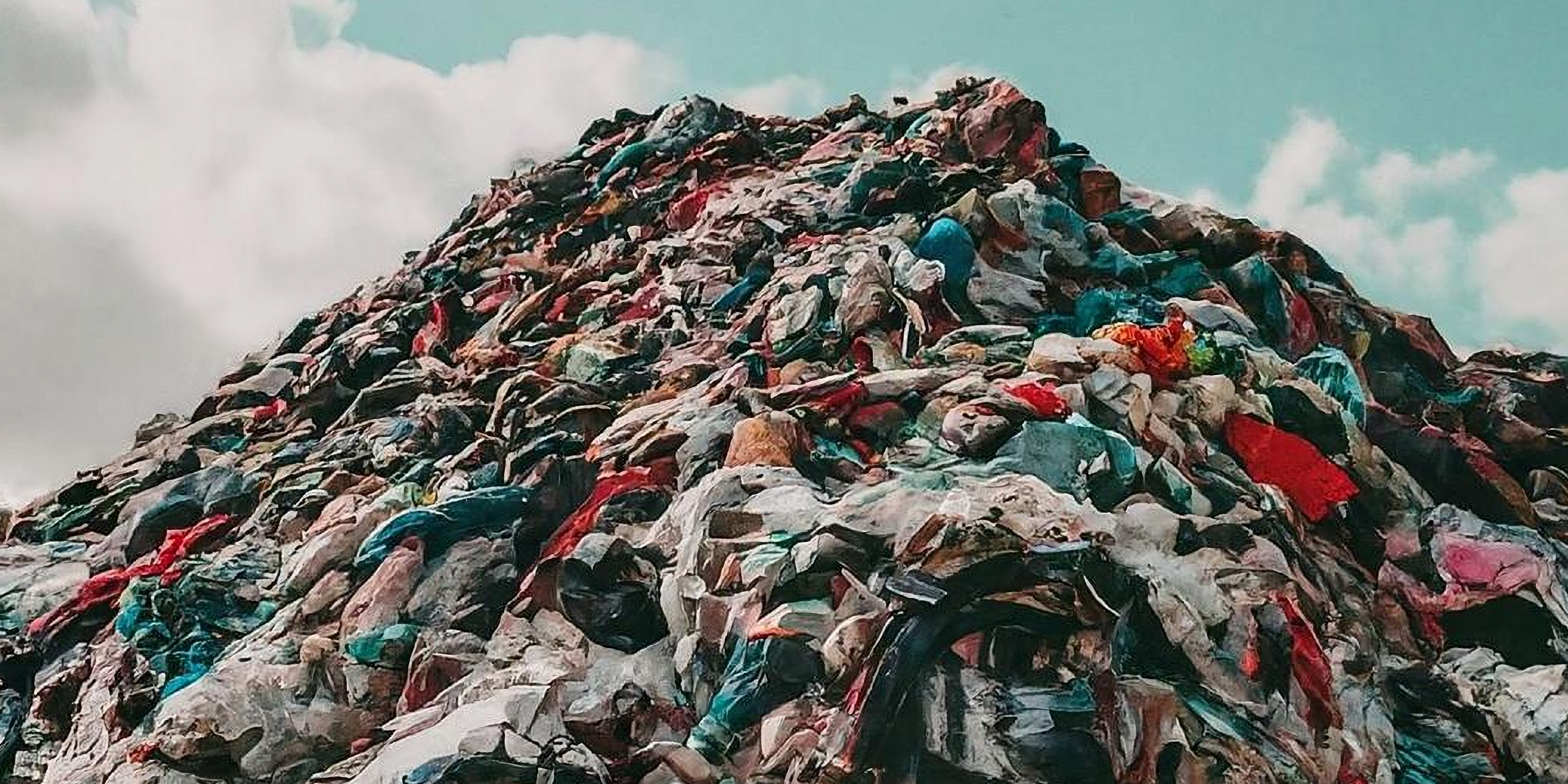Hiding in Plain Sight: The Apparel Industry’s Contribution to Plastic Pollution
-

-
Michael Sadowski
-
October 15, 2024
-
6 min read

Michael Sadowski
October 15, 2024
6 min read


In June, a group of researchers published a paper in Nature Communications in which they estimated the apparel sector’s contribution to plastic pollution – a whopping 8.3 million tons, or 14% of all plastic waste. While there has been considerable attention to microfiber pollution from synthetic textiles such as polyester and nylon, this study – to my knowledge – is the first estimate of “macro” plastic pollution from apparel, the vast majority of which comes from discarded apparel after consumer use.
Over my two decades of work in the apparel industry, companies have made efforts to reduce the environmental impacts of synthetic fibers. For example, in its first sustainability report (2001), Nike described efforts to switch to recycled synthetic fibers and to address chemicals of concern in polyester production. A number of brands have shifted to recycled polyester, for example, 99% of the polyester used by Adidas is recycled, while the figure for H&M is 81%. Under Textile Exchange’s 2025 Recycled Polyester Challenge, 124 companies have committed to source a minimum of 45% recycled polyester by 2025, with more than half committing to 100%.
Companies have been making this shift for several reasons, including addressing resource depletion and reducing greenhouse gas emissions (recycled polyester is estimated to be roughly 70% lower emissions than virgin fossil-fuel based polyester). Yet, the analysis in Nature Communications raises an overlooked impact for apparel companies – one that is increasingly getting the attention of policy makers and other stakeholders.
Plastic Pollution in the Spotlight of Global Policy Makers and NGOs
From what I could tell, there were no apparel companies present at the most recent global plastics treaty negotiations in Ottawa (April 2024).1 This absence was noteworthy given the potential implications of the treaty process – production limits, recycled content requirements, chemicals of concern, and more – for a sector that is heavily reliant on fossil-fuel based inputs. According to one estimate, over 60% of all polyethylene terephthalate (PET) production goes to fibers, and according to Textile Exchange’s most recent Materials Market Report, polyester is roughly 57% of all fibers used in textiles, with nylon and other synthetics comprising another 10%. The proportion of synthetics used in the apparel sector has been on an inexorable rise since the mid 1970s, when cotton was the dominant material.
Around the world, policy makers are increasing their focus on the apparel sector and its contribution to plastic waste. Since 2007, France has had an extended producer responsibility (EPR)2 scheme for textiles, and other European nations are following suit. California recently became the first state in the United States to enact EPR for textiles, and Canada is gathering stakeholder input on plans to address environmental impacts from apparel, including plastic waste. Environmental non-governmental organizations (NGOs) are pushing for change, for example the Fossil Fuel Fashion campaign which ran in 2023 and Stand.earth’s campaign against brands for their use of virgin synthetics and coal for fuel in textile mills. Textile Exchange has called for the elimination of virgin fossil-fuel based fibers by scaling next-generation alternatives and producing fewer new products and materials.
A Call to Action for Apparel Companies on Plastic
Given the amount of synthetic material used by apparel companies and the resulting impacts, policy and stakeholder pressure will continue to increase. Given this, I offer the following recommendations for apparel companies to better manage their plastic footprints:
- Brands should look for opportunities to shift from synthetic to natural fibers, including cotton. There are certain products for which synthetic material is well suited, for example outdoor apparel and footwear. However, polyester has taken hold in product categories that do not require its performance attributes, and thus could be viewed as unnecessary. While there are environmental tradeoffs3 between synthetics and natural fibers, natural materials generally biodegrade more effectively than synthetic materials.4
- Where synthetics are needed for functional reasons, brands should transition from virgin, fossil-fuel based to recycled synthetics, which today means recycled PET bottles for polyester. While there are concerns with the use of PET bottles in apparel, for example shedding of microfibers and effectively ending the cycle of a bottle (versus recycling it back into a new bottle), recycled polyester from bottles has a lower environmental impact than virgin polyester. Also, switching to recycled fibers could reduce fees paid through EPR schemes.
- Apparel companies sourcing PET bottles should scrutinize the source of recycled synthetics, and work to address any human rights issues at the point of collection. If the bottles are collected in emerging markets, it is highly likely that informal workers are collecting them. Apparel companies can join the Responsible Sourcing Initiative (RSI) to better understand and manage the risks associated with the informal sector. The RSI includes work on traceability, which will be key.
- To address the limitations of recycled polyester from bottles, and to diversify supply, apparel companies should invest in and bring to market so-called next-generation materials, including textile-to-textile recycled and bio-based materials. There is an amazing array of innovation in this space, for example Ambercycle, Circ, and Syre to name a few. Displacing incumbent materials is a significant challenge, and scaling these innovations requires the right enabling environment and brand support.
With the next meeting of the plastic treaty negotiators fast approaching, there is an opportunity for apparel companies to step forward and join other sectors to advocate for a strong plastics treaty. I commend companies such as H&M Group, Kering, and Decathlon for endorsing the Business Coalition for a Global Plastics Treaty – we need more apparel companies to join them. A strong treaty will provide the regulatory certainty and level playing field that help increase the supply of sustainable materials and spark the innovation needed to create a circular future for the apparel sector.
Endnotes
- In March 2022, 175 countries endorsed the development of a legally binding treaty to combat plastic pollution by the end of 2024. There have been four meetings of negotiators thus far, with the fifth and final one scheduled for November 2024.
- A policy approach which holds producers responsible for product management through a product’s lifecycle. This generally requires producers (e.g., apparel brands) to pay a fee to support end of life strategies such as reuse and recycling.
- According to the Higg MSI, cotton has a better impact score than polyester in global warming and resource depletion, and trails polyester in water, chemicals, and eutrophication.
- See for example this study in Marine Pollution Bulletin